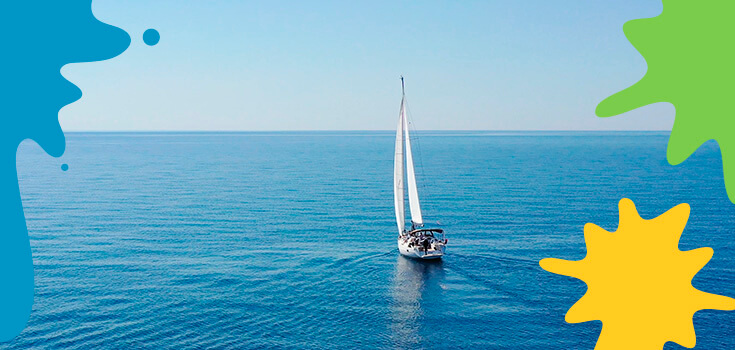The ocean is one of the biggest mysteries on Earth. With its abundance of creatures, organisms and plant life, it’s no wonder that it captivates children and adults of all ages.
This continuous body of salt water covers more than 70% of the Earth’s surface. Oceanographers have distinguished five interconnected regions — the Pacific, Atlantic, Indian, Arctic and Southern Oceans. Within each oceanic zone, there’s unique animal and plant life.
From plankton to sea turtles to large marine mammals like dolphins and whales, there’s an entire world beneath the ocean’s waves. Even today, oceanographers are constantly discovering new plants and animals.
Interested in learning more about the ocean? Check out these five fascinating facts!
1. The Ocean Produces Most of the Earth’s Oxygen
Even though you can’t see it, the surface layer of the ocean is filled with photosynthetic plankton. This oceanic plankton, which is made up of algae, bacteria and some plants, produces about half of the oxygen we breathe on Earth.
2. The Ocean Helps Regulate Climate
Along with producing oxygen, the ocean helps regulate the concentration of CO2 in the atmosphere. It does this by not only absorbing, but also storing and releasing harmful greenhouse gases. By essentially serving as a “storehouse,” the ocean helps to control climate change.
3. The Great Barrier Reef Can Be Seen From Space
The Great Barrier Reef, which is located off the coast of Australia, is one of the most complex natural ecosystems in the entire world. Within the Great Barrier Reef, there are all kinds of habitats and communities. The reef, which is built by organisms, is so big that it can even be seen from space.
4. People Have Visited the Ocean’s Deepest Point
The deepest point we know of is called Challenger Deep, and it is located in the Pacific Ocean. This point lies almost seven miles below the surface of the ocean. The first manned descent was made in 1960 by two men named Lt. Don Walsh and Jacques Piccard. Then, in 2012, James Cameron completed the same trip in a manned submersible.
5. There Are Chimneys of Chemicals
On the seafloor, there are chimneys of chemicals, referred to as the Black Smokers. These chimneys occur in areas where seawater meets magma. Microbes use these chemicals and convert them into energy. There are also hundreds of species that call this area of the ocean home.
Learn More About the Ocean With “Take a Dive” Camp
At Science Explorers, we are all about making learning about science fun for elementary-aged kids. As a hands-on science company, we provide a unique interactive and inquiry-based format for kids to grow their knowledge in the exciting world of science.
If your kids are interested in learning more about marine biology and oceanography, be sure to check out our Take a Dive camp. This camp is divided into either a half-day or full-day option.
In the half-day camp, kids will have the chance to join a fisherman’s challenge and make their own submarine. Participants will even learn how to survive at sea by using a homemade solar still.
Meanwhile, the full-day camp allows kids to dive even further into ocean life and learn about sea creatures. Kids will take part in activities ranging from a squid dissection to a whale adaptions lab to get up close and personal with some of the most interesting creatures.
Discover Fun, Educational Science Programs
Since 1999, Science Explorers has been providing educational opportunities for children ages 4 to 11. We offer all kinds of clubs, camps and STEM programs for children throughout Pennsylvania, New Jersey, Delaware and Maryland.
Our summer STEM camps will provide kids with something fun — and educational — to do throughout the summer months. From learning about space to polymers, children will make all kinds of new discoveries. We also offer all kinds of after-school STEM clubs for kids interested in delving into different topics and meeting for one hour once a week.
Register today to get started!

